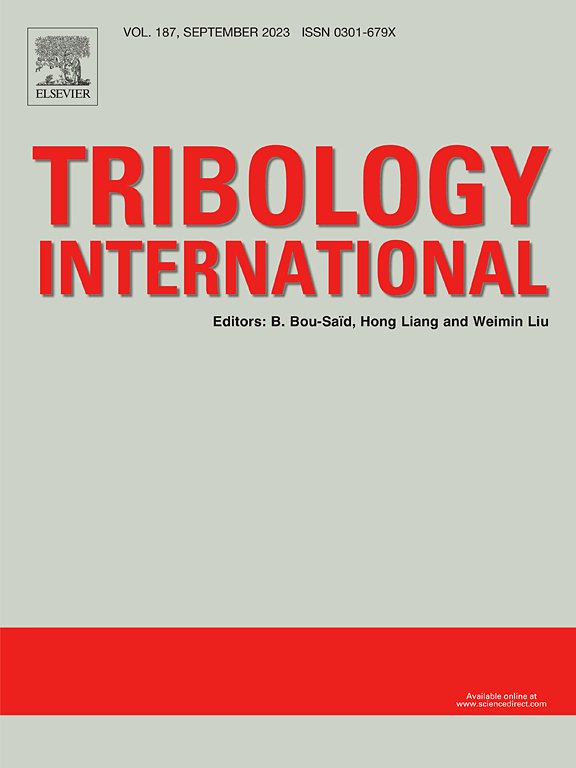Nonlinear vibration and slippage characteristics analysis of full-ceramic bearings with dynamic surface waviness
IF 6.1
1区 工程技术
Q1 ENGINEERING, MECHANICAL
引用次数: 0
Abstract
To examine the impact of surface waviness on nonlinear vibration and slippage characteristics of the full-ceramic bearing (FCB), thermal deformation and displacement excitation are coupled to propose the dynamic surface waviness model. The time-varying displacement excitation (TVDE) and the Hertz contact theory are combined to obtain the calculation method of the time-varying contact stiffness coefficient (TVCSC). The slipping dynamic model of FCBs is established. We examine how the slippage and nonlinear vibration properties of FCBs are affected by thermal deformation, rotating speed, and waviness. The findings indicate that the rise in rotational speed, waviness amplitude and wave number all cause the increased ball-raceway contact stiffness coefficient. The rise in the amplitude of waviness as well as wave number can have the effect of inhibiting slippage. However, they can be too large resulting in an abnormal inner ring vibration. The increase in rotational speed can exacerbate slippage. Meanwhile the thermal deformation also has the effect of inhibiting slippage. The maximum fundamental frequency error between simulation and experiment is 0.37 %. This research can benefit the optimal design of FCBs structures.
具有动态表面波纹度的全陶瓷轴承非线性振动与滑移特性分析
为了研究表面波纹度对全陶瓷轴承(FCB)非线性振动和滑移特性的影响,将热变形和位移激励耦合在一起,建立了动态表面波纹度模型。将时变位移激励(TVDE)与赫兹接触理论相结合,得到了时变接触刚度系数(TVCSC)的计算方法。建立了fcb滑移动力学模型。我们研究了fcb的滑移和非线性振动特性如何受到热变形、转速和波纹度的影响。结果表明,转速、波纹幅值和波数的增加都会引起球滚道接触刚度系数的增大。波浪幅值的增加和波数的增加可以起到抑制滑移的作用。然而,它们可能太大,导致不正常的内环振动。转速的增加会加剧滑移。同时,热变形还具有抑制滑移的作用。仿真与实验的最大基频误差为0.37 %。该研究对fcb结构的优化设计具有一定的指导意义。
本文章由计算机程序翻译,如有差异,请以英文原文为准。
求助全文
约1分钟内获得全文
求助全文
来源期刊

Tribology International
工程技术-工程:机械
CiteScore
10.10
自引率
16.10%
发文量
627
审稿时长
35 days
期刊介绍:
Tribology is the science of rubbing surfaces and contributes to every facet of our everyday life, from live cell friction to engine lubrication and seismology. As such tribology is truly multidisciplinary and this extraordinary breadth of scientific interest is reflected in the scope of Tribology International.
Tribology International seeks to publish original research papers of the highest scientific quality to provide an archival resource for scientists from all backgrounds. Written contributions are invited reporting experimental and modelling studies both in established areas of tribology and emerging fields. Scientific topics include the physics or chemistry of tribo-surfaces, bio-tribology, surface engineering and materials, contact mechanics, nano-tribology, lubricants and hydrodynamic lubrication.
 求助内容:
求助内容: 应助结果提醒方式:
应助结果提醒方式:


